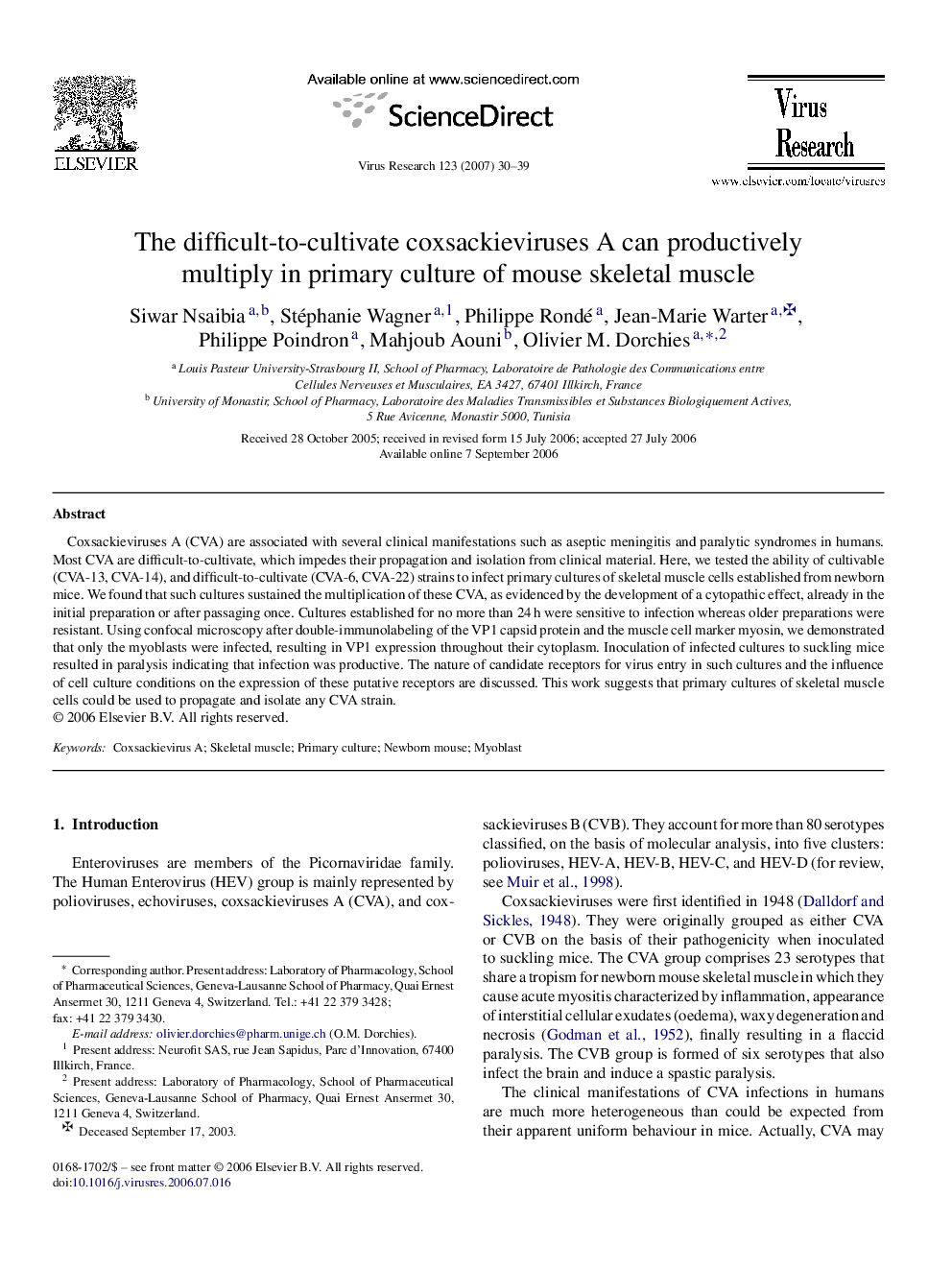| Article ID | Journal | Published Year | Pages | File Type |
|---|---|---|---|---|
| 3431093 | Virus Research | 2007 | 10 Pages |
Coxsackieviruses A (CVA) are associated with several clinical manifestations such as aseptic meningitis and paralytic syndromes in humans. Most CVA are difficult-to-cultivate, which impedes their propagation and isolation from clinical material. Here, we tested the ability of cultivable (CVA-13, CVA-14), and difficult-to-cultivate (CVA-6, CVA-22) strains to infect primary cultures of skeletal muscle cells established from newborn mice. We found that such cultures sustained the multiplication of these CVA, as evidenced by the development of a cytopathic effect, already in the initial preparation or after passaging once. Cultures established for no more than 24 h were sensitive to infection whereas older preparations were resistant. Using confocal microscopy after double-immunolabeling of the VP1 capsid protein and the muscle cell marker myosin, we demonstrated that only the myoblasts were infected, resulting in VP1 expression throughout their cytoplasm. Inoculation of infected cultures to suckling mice resulted in paralysis indicating that infection was productive. The nature of candidate receptors for virus entry in such cultures and the influence of cell culture conditions on the expression of these putative receptors are discussed. This work suggests that primary cultures of skeletal muscle cells could be used to propagate and isolate any CVA strain.
